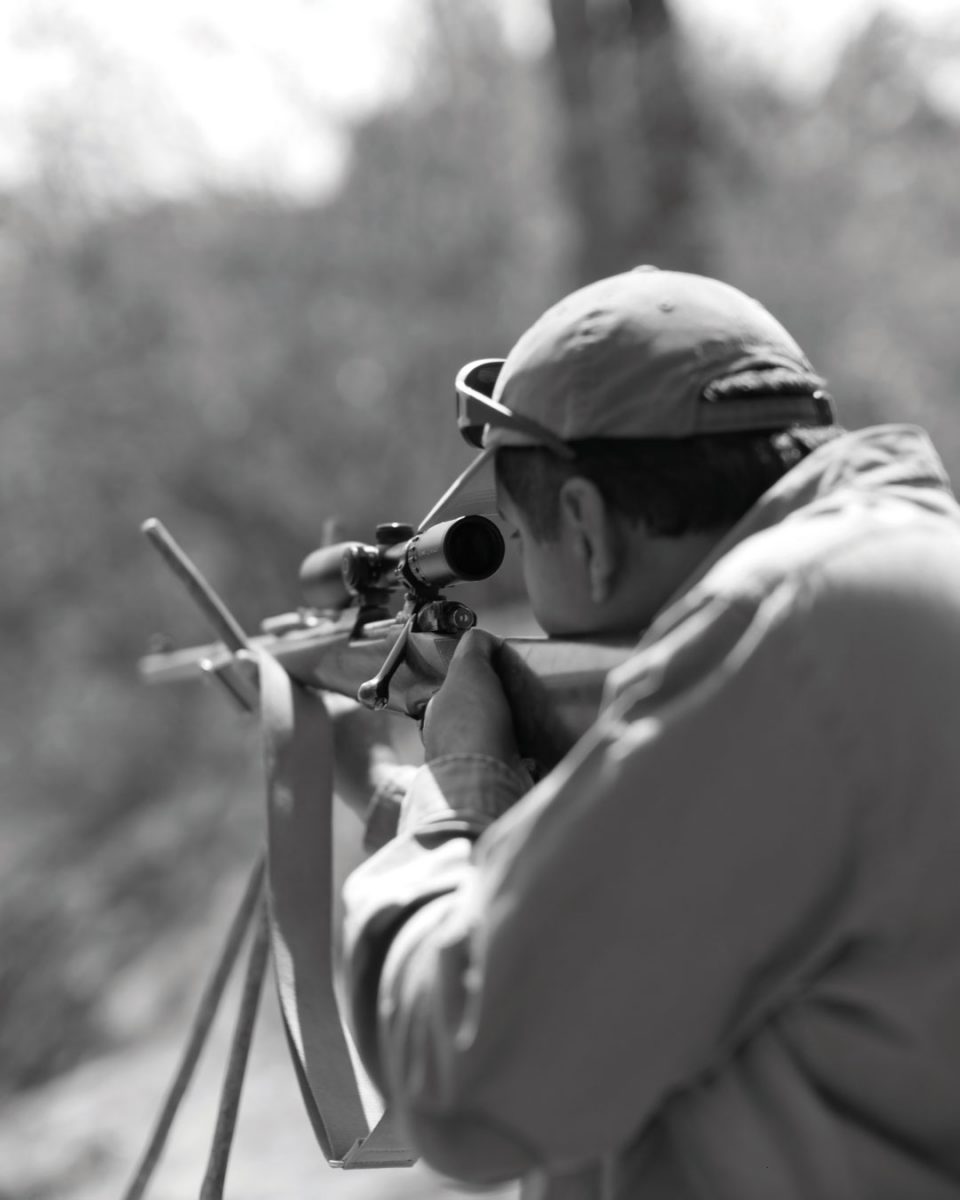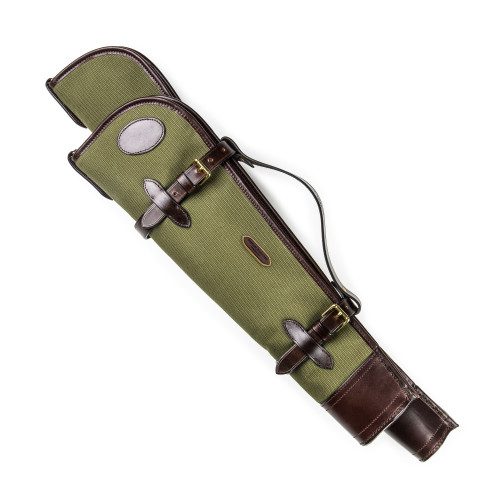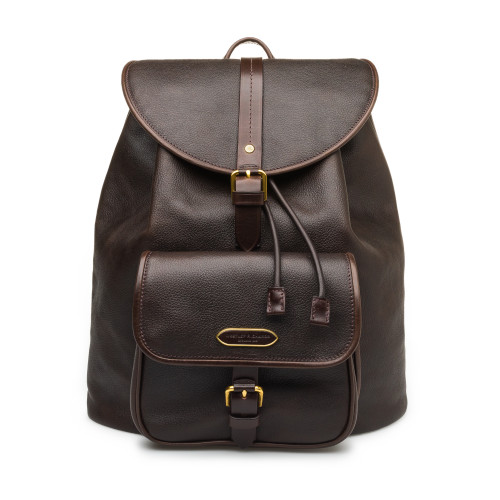A good few years ago, I read an article written by an American hunting writer in which he discussed the contents of his gun cabinet. He had clearly seen a great deal of the world while carrying various different rifles in many different calibres, and, drawing on that experience, his article was written to try and aid other travelling hunters faced with the dilemma of which calibre and type of rifle one should choose for particular environments, circumstances and species of quarry.
I have attempted something similar with reference to hunting optics. I believe that in most hunting scenarios across the world (with the exception of dangerous game in certain circumstances), that having optical help will greatly enhance a hunter’s success rate.
Modern optics are generally very well made and some can be purchased at a reasonable cost. However, I firmly believe that you get what you pay for.
Hunting situations will, by their very nature, very often push the boundaries of what an optical device can cope with. Adverse weather conditions – extreme heat, freezing cold, high humidity, etc. – as well as knocks, bumps and falls can ruin your trusty glass. As a result, many hunters will opt to go down the ‘throw away route’; get a cheaper pair, use them until they fail and then throw them away and buy a new pair.
I would far rather have hardy equipment that will last at least my lifetime – a trusty companion to help me through the tough times – and an item that brings back fond memories of past hunts and tricky situations.
It is important to make sure your rifle scope set-up and the binoculars you use are right for you. Do your research, look at different brands and try them out if possible. If you know a professional hunter or guide, ask their opinion to see what they use and why.
When I look at an optic, there are a few basic rules that I follow to decide whether it is suitable. Field of view is the first thing I will look at when comparing binoculars of the same magnification. How sharp and crisp the image is towards the edge will affect how much of that view is actually usable, so clarity is very important.
Twilight performance is also a key factor; how an optic performs in low light is not just about how much light makes it through to your eye. Most high-end optical companies will boast of transmission figures of over 90%, but numbers and figures are no substitute for how a device actually works in the real world. The type of glass used, and the contrast, along with depth of field, are all important factors when it comes to picking up detail at dusk and dawn.
The coating that goes on the outside of a lens to bead off dirt and water is also of importance. Most scopes are sealed internally from dirt and moisture, but water and dirt clinging to the outside has a huge effect on performance. A very small amount of dust could reduce light transmission by as much as 10%.
Finally, for me, they should be comfortable to carry and use. Many hunters will consider gun-fit when purchasing a rifle, but very few check that when they mount their scope the eye relief is good and they are happy with the features and the reticle. Binoculars should feel comfortable in the hand, they should focus easily and they should feel balanced and reasonably light. Granted, good quality optical glass is heavy, but bear in mind that you will be carrying your binoculars around your neck all day and potentially for a number of days in a row.

With such a wide range of hunting opportunities available, some may opt for a one-calibre, one-rifle, one-scope combination for everything. Trying to pick one all-round calibre with a scope that will cope in all situations is very difficult; indeed, it is the holy grail!
We’re talking about a rifle that is light, shoots bullets with a flat trajectory (but without too much recoil), is perfectly capable of clean kills at any range on most types of game and is topped with a scope that is light, can focus perfectly at 10 yards out to 1,000 yards, has plenty of zoom but can also cope with moving or charging game, and allows enough light transmission to take a shot at dusk!
Finding a scope that will do all of this is now actually easier than it is to find a rifle/calibre that covers all bases. Many modern scopes have fantastic fields of view, great low-light capabilities, and will still enable the hunter to take shots at long or close range. But, of course, there is always some compromise.
For some, however, there can be no compromise, and they will opt to equip themselves with a rifle and scope combination that is best-suited to the specific type or style of hunting they have in mind. For every different situation, it should be possible to put together a set-up that will excel in that terrain.
WOODLAND/STATIC HUNTING
Hunting in woodland or static hunting from a hide or high seat, requires less movement but places high demands on equipment. Target animals will often take refuge in dense thickets, making locating them an almost impossible task. However, game must move from these thickets to feed, mate or defend their territory, and it is during these periods when they are most vulnerable. And it just so happens that these movements are quite often prompted by a change of light or change of weather. Low-light performance is therefore key for this type of hunting, and weight is less of a consideration.
Rifle sights need to be able to collect all available light, so a 50mm or 56mm objective is a huge benefit. Shots are generally close and through cover but if sitting on the edge of woodland, slightly longer shots can be required. It is here that a modern scope with a variable zoom comes into its own.
A hunter can sift through branches to place a close-range shot at 4x zoom but at a moment’s notice wind up to 10x and place a longer shot with equal precision. Look for something like a 2–10x56 or a 3–12x50.
Reticles should be thicker, but this can pose problems with smaller game at longer distances. Some manufacturers have made reticles with a much finer subtension which gives the user more precision, but have included a small illuminated dot at the centre which can be switched on at very last light so a shot can still be taken.
Binoculars can be a little heavier, so an 8x56 or 8x42 would be my recommendation. Lower magnification improves field of view and low light performance, and 8x is the maximum recommended for these situations.
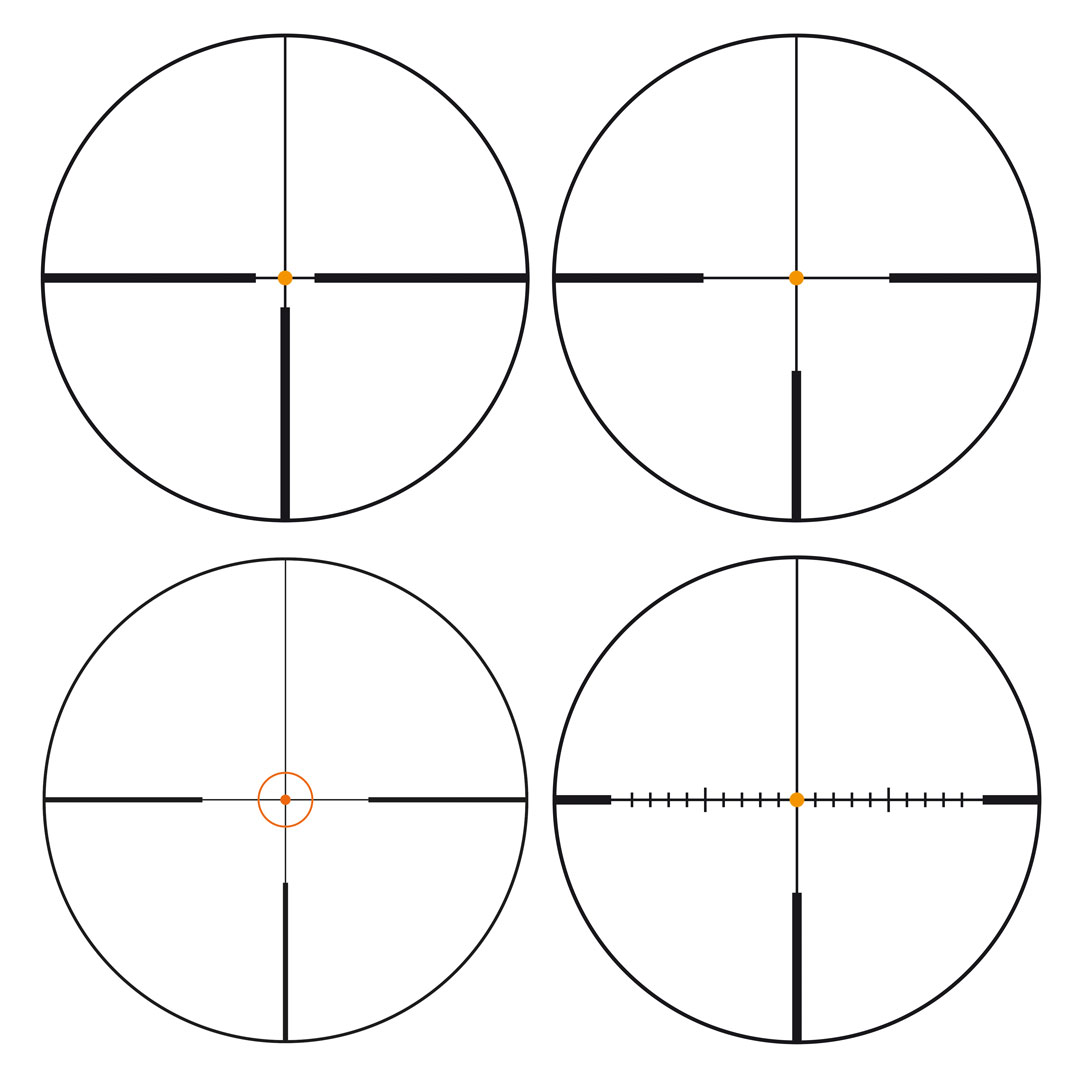 Once you have made your choice of rifle scope and decided on the specification required, it will be necessary to pick which reticle to use. The options are endless and each manufacturer will have a wide selection to choose from. As we have seen a rise in the trend for higher magnification so we have also seen an increase in more complicated tactical style designs. There is a tendency for the sight picture to become a little ‘busy’ and for hunting purposes this is not really necessary. The decision is a very personal one and will differ from one person to the next depending on their style of hunting, quarry etc. It should be well defined and draw the user into the aim point, the hunter should be able to see their aim point in poor light conditions, and when aiming at darker bodied quarry an illuminated centre can be very useful. Any hold over markers should not obstruct too much field of view and should be simple to use. The thickness of the markings again is down to personal preference and will often depend on whether illumination is present.
Once you have made your choice of rifle scope and decided on the specification required, it will be necessary to pick which reticle to use. The options are endless and each manufacturer will have a wide selection to choose from. As we have seen a rise in the trend for higher magnification so we have also seen an increase in more complicated tactical style designs. There is a tendency for the sight picture to become a little ‘busy’ and for hunting purposes this is not really necessary. The decision is a very personal one and will differ from one person to the next depending on their style of hunting, quarry etc. It should be well defined and draw the user into the aim point, the hunter should be able to see their aim point in poor light conditions, and when aiming at darker bodied quarry an illuminated centre can be very useful. Any hold over markers should not obstruct too much field of view and should be simple to use. The thickness of the markings again is down to personal preference and will often depend on whether illumination is present.MOUNTAIN HUNTING
High altitude regions of the world pose a different set of challenges. There is the difficult and steep nature of the terrain, and the distances covered during a hunt. Every gram of weight counts and the less a person can carry, the better they will be able to cope with this.
Locating game in such huge areas and often from much greater distances is difficult. It goes without saying that your optics must be sealed and waterproof, capable of dealing with pressure and temperature changes. Kit should be light but also capable of performing well at longer distances. Sometimes a few extra grams means that you can have more zoom or one of the modern ballistic systems to help reduce inevitable human error. I think this type of hunting produces the biggest spread of options and differences of opinion.
Some hunters may prefer a heavier, more stable set-up in a bigger calibre with a high zoom range. Others will strip down to the bare essentials, lightest scope and rifle possible and learn to deal with some of the disadvantages and limitations.
My recommendation would be a scope that mounts low but has higher zoom for assessing detail and that longer shot. A 3–18x50 for me is a good all-rounder; some will prefer slightly more or less zoom. Magnification this high is not really needed for hunting situations, but it is good for viewing detail or assessing the condition of an animal just before that vital shot.
Objective size is less important, but I still like to have a scope with good general light-gathering capabilities, so a 42mm–50mm is perfect. Ballistic turrets do not look pretty, but if set up correctly and paired with a rangefinder, they really do inspire confidence and reduce human error.
Recently, we have seen some amazing advancements in technology and the mountain hunter can now equip themselves with a binocular or riflescope that has an internal range finding system capable of taking distance, angle, temperature and air pressure into consideration before calculating the adjustment required by the shooter.
Deciding when it is ethical to shoot live quarry is down to the individual and all the ballistic systems in the world are no substitute for practice and fieldcraft. Hunting is about the challenge and experience, not pulling the trigger. I am, however, an advocate of using anything that may help reduce risk of wounding in difficult conditions.
Binoculars should be as light as you can get away with, with a maximum objective of 42mm. A 30mm or 32mm objective is ideal in such situations. They need to be robust, and the better they are at picking out detail, the better they will be for finding game that is hidden at long distances. A pair of 8x32 or 10x32 binoculars would be an ideal choice, but many of the range-finding binoculars come in 42mm or larger – a little heavier but steady to hold and lighter than carrying both a range-finder and a pair of binoculars. Some hunters or guides will also want to carry a spotting scope which gives them a huge increase in zoom.
DRIVEN HUNTING
This type of instinctive hunting – where the user could be standing inactive for long periods and then suddenly have to spring into action, find, track and identify moving game – means that binoculars are slightly less important.
Rifle-fit, the eye relief and fit of the scope are crucial. The scope should be mounted with as low profile as possible. Small 24mm objectives allow this. A good driven hunting scope should go down to 1x zoom but also allow the hunter to place a more measured shot at something like 4x or 6x. Field of view is key here and most premium optic manufacturers will have a scope developed specifically for this type of hunting with the largest field of view they can make.
With this type of hunting, in my opinion, it will benefit the user to go and try out several scopes at a range or cinema where they can practice mounting the rifle and scope and tracking various game in different situations to get a feel for what they prefer. Everyone is different and what suits one person’s technique and body shape may not suit another. It is possible to choose a scope which has a little more zoom and a slightly bigger objective – 42mm, for example. It will perform on driven game but also make hunting at dusk and dawn easier. There will, however, be some compromised performance on moving game drives.
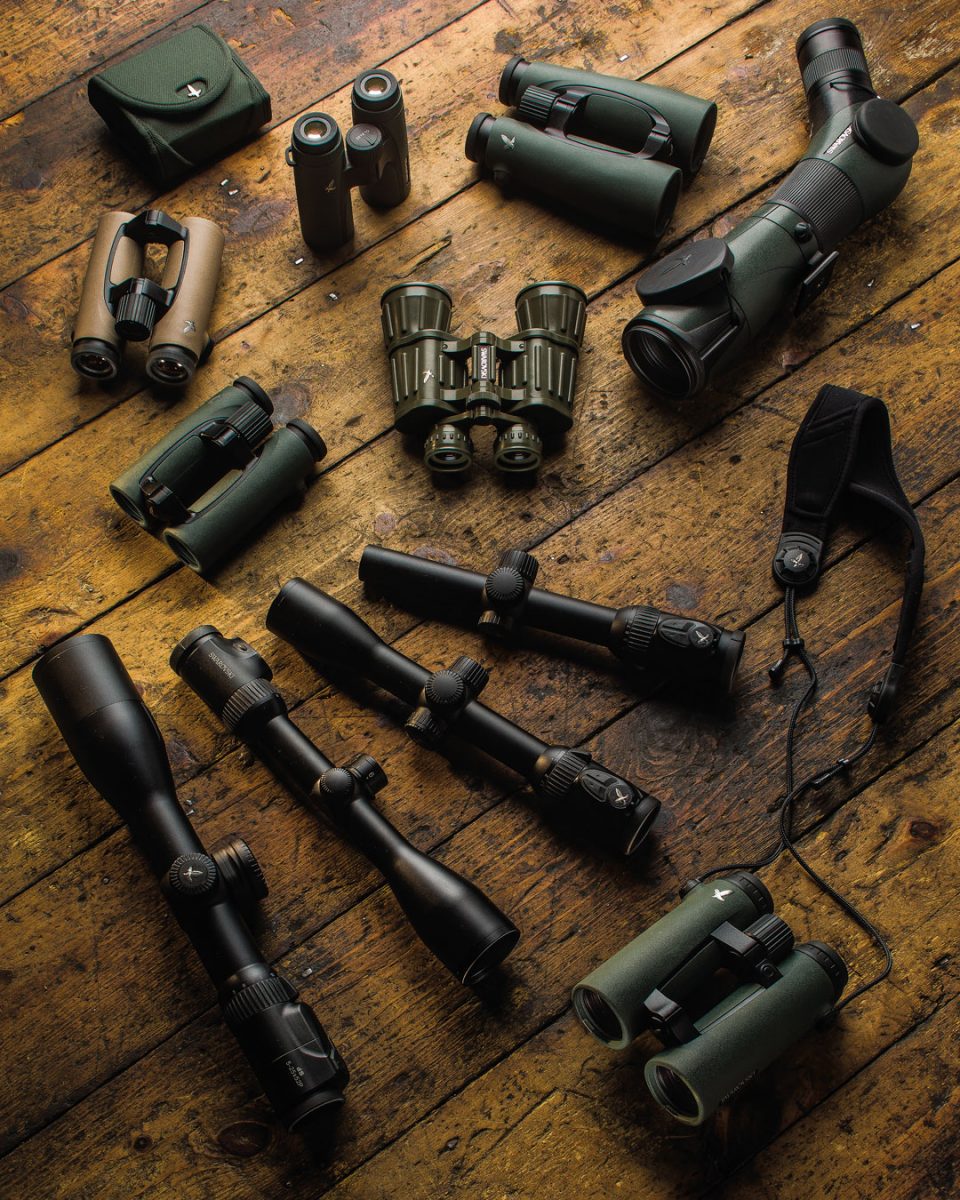 Many of the diverse selection of optics available have a multi purpose use. Some are for specific types of hunting and it is often necessary to have several available to increase your chances of success in the field.
Many of the diverse selection of optics available have a multi purpose use. Some are for specific types of hunting and it is often necessary to have several available to increase your chances of success in the field.DANGEROUS GAME
Shot placement is key on any of the thick-skinned animals, but particularly on animals that fall into the ‘dangerous game’ category.
Ranges are usually very close to minimise the risk wounding and due to the ballistics of the calibres used in such situations.
Shooting through brush or cover could well occur, and the possibility of a charge lurks at every corner. The first thing I would look for is heritage and reliability. Most PHs will have an un-scoped rifle in a show-stopping calibre designed as a last resort, and at this stage a scope is just one more thing that could potentially fail.
For a client, however, placing that first shot accurately is the key to success. Having a scoped rifle that you can have confidence in is key. It should be able to cope with recoil from big calibres and be very tough. In Africa, dust, heat and high humidity could be an issue, and in Alaska or Canada, sub-zero temperatures pose further challenges.
What is the scope rated to, and can you speak to people who have been and used the equipment there? For hunting in thick brush, a scope like a 1-6x24 would be perfect. However, if you are likely to be hunting in varied terrain and at a range of distances, then I would recommend something which has a larger range of zoom, from 2x up to about 10x, for example, which will cover every eventuality and still be useful in an emergency. If the rifle has open sights and quick release mounts, then that would be even better.
Binoculars will be carried for long periods, mostly on foot, and with dangerous game (apart from lion and leopard, perhaps) one does not need to consider the possibilities of hunting in seriously low light periods for obvious reasons. So small and lightweight binoculars would be ideal. My preference would be a pair of 8x30s with a good field of view. I would look for something that has a nice, thick rubber armouring to protect from impact, and as few recesses as possible for dirt and dust to collect.
Put a group of hunters in a room together and they will argue for hours about what is best in any situation. There is no answer, only opinion. The choice is huge and the decision should not be made lightly. The welfare of the game we love depends on it.
Whether for the discerning collector or the avid sportsman, Westley Richards firearms represent the epitome of excellence in the world of bespoke gunmaking. Known for the droplock shotgun, over and under shotgun, double barrel rifle and bolt action rifle, the company has achieved an illustrious 200 year history of innovation, craftmanship and artistry. As part of our best gun build, clients can choose from three levels of gun engraving: the house scroll; signature game scenes; and exhibition grade masterpieces. All Westley Richards sporting arms are built at their factory in Birmingham, England. Discover more about the gunmaking journey at our custom rifles and bespoke guns pages.



 Enquire
Enquire







